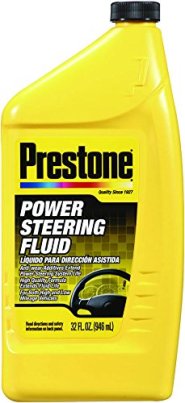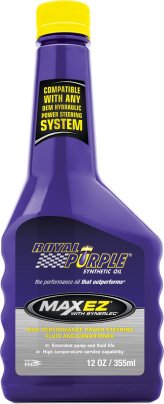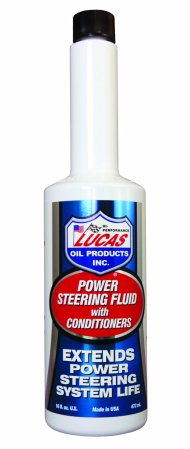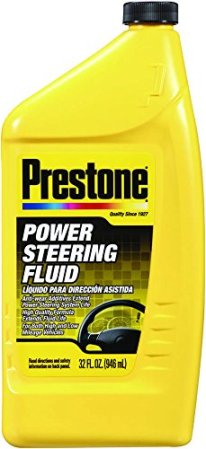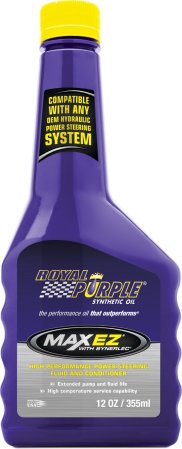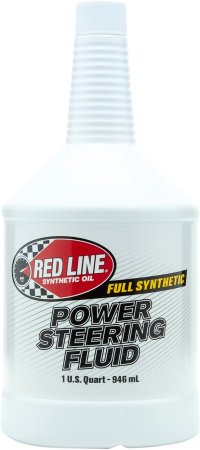We may earn revenue from the products available on this page and participate in affiliate programs. Learn more ›
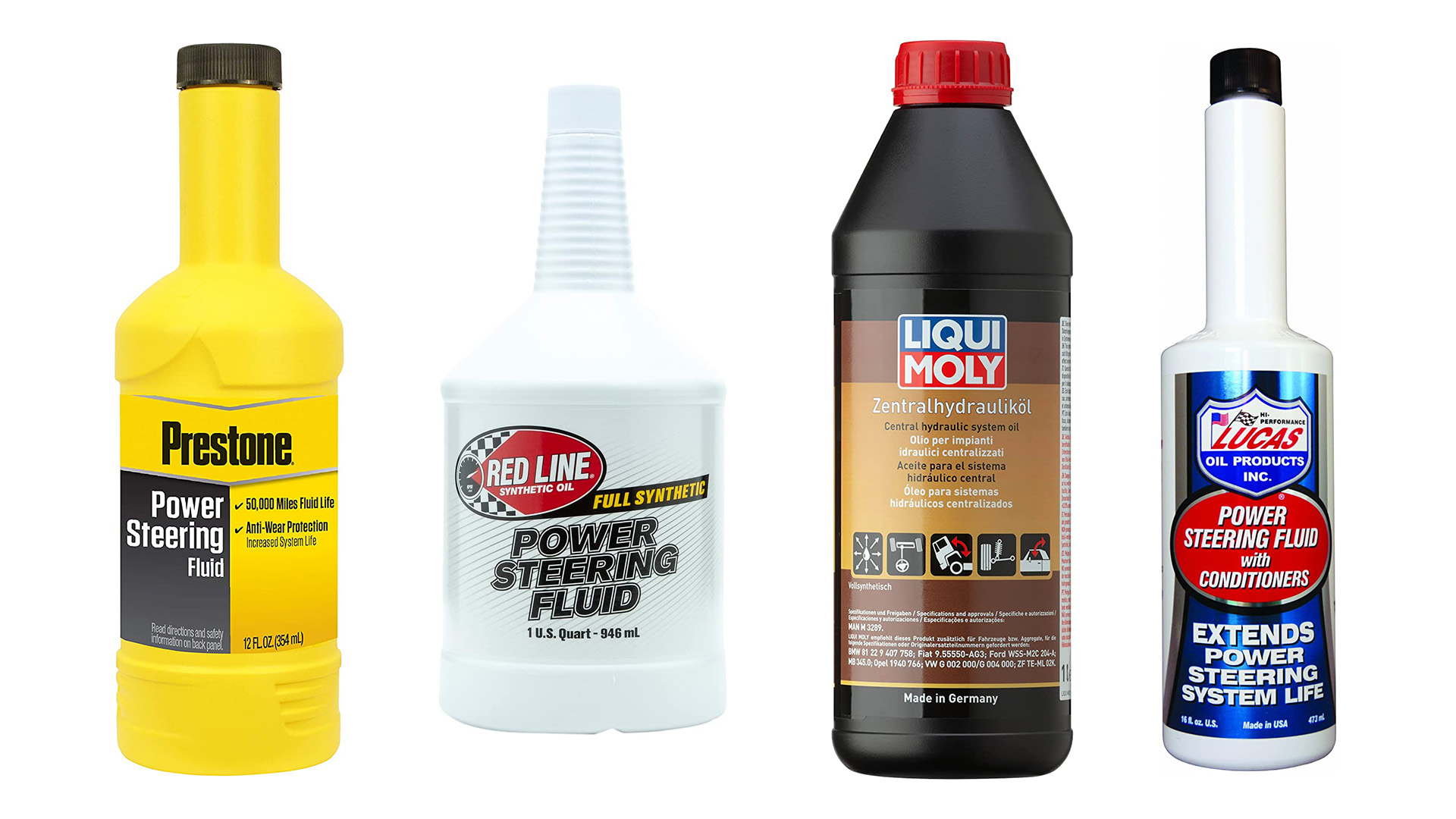
One of the best technologies added to vehicles over the years is hydraulic power steering. In order to maintain an easy and painless driving experience, this system needs regular care and upkeep. Otherwise, it could either be awkward or hard to turn the wheel. Power steering fluid is a formulated hydraulic fluid that keeps your steering working and can even protect your car.
Hydraulic power steering has largely given way to electric power steering, so it’s rarely used in new cars. But there are still plenty of cars on the road that utilize it. Here are our top picks for the best power steering fluid you can buy.
Summary List
- Best Overall: Lucas Oil Power Steering Fluid
- Best Value: Fram Prestone Power Steering Fluid
- Honorable Mention: Royal Purple Power Steering Fluid
- Honorable Mention: Liqui Moly Central Hydraulic System Oil
- Honorable Mention: Red Line Power Steering Fluid
Best Power Steering Fluids: Reviews & Recommendations
Best Overall
Lucas Oil Power Steering Fluid
Pros
- Great protection against foaming/oxidization
- Contains seal-replenishing ingredients
- Easy-to-pour bottle
Cons
- Not compatible with all manufacturers
- Shorter service life than other fluids
Best Value
Prestone AS261 Power Steering Fluid
Pros
- Contains conditioners to revitalize seals
- Great corrosion inhibitors
- Inexpensive price
Cons
- Users report that it took longer for system noises to cease
- Incompatible with most Asian automakers, double-check compatibility before purchasing
Honorable Mention
Royal Purple MAX EZ Power Steering Fluid
Pros
- Proprietary additives improve fluid robustness
- Inexpensive compared to other high-performance fluids
- Great quantity for topping off
Cons
- Users report arriving in leaky containers
- Does not work with all power steering systems
Honorable Mention
Liqui Moly Central Hydraulic System Oil
Pros
- Exceeds many OEM standards
- Inexpensive compared to OEM formulas
- Easy pour bottle
- One liter is good for a mild system flush on most vehicles
Cons
- Much pricier than other non-OEM fluids
Honorable Mention
Red Line Power Steering Fluid
Pros
- Excellent oxidization resistance
- Great for high-performance applications
- Eliminates system noises and groaning
Cons
- Asphalt-like smell may be off-putting
- Higher-than-average price
Our Verdict on the Best Power Steering Fluids
For a great universal power steering fluid, go for the Lucas Oil 10442 Power Steering Fluid for its protective features and car compatibility.
For a better price-per-ounce value, Prestone’s AS261 Power Steering Fluid offers a great solution at a fraction of the price.
FAQs
A: The answer is yes, eventually. While everything has a shelf life, power steering fluid can last a very long time if kept sealed and clear of contaminants. You can see a change in color when the solution has spoiled or degraded.
A: Compatibility: If you opt for a third-party fluid, it’s essential to know which vehicles the fluid was created for. Every bottle will tell you what manufacturers the fluid can be used with. It’s important not to ignore these directions because each car has its own unique power steering needs.
Longevity: One factor in deciding which power steering fluid is best for you is how long the steering oil will last. Some products are made to protect the steering system while keeping it properly lubricated. These oils may have shorter life spans compared to fluids that don’t have protective agents.
Transmission Fluid: Be aware of any power steering fluids that claim to also work with transmissions and brakes. While transmission fluid and brake fluid have similar qualities to power steering fluid, each product is specially designed for its respective system. Using automatic transmission fluid instead of power steering fluid can damage certain components.
A: A general rule of thumb for replacing your power steering fluid is to do it every 50,000 miles. If your vehicle has a recommended mileage in the owner’s manual, it’s best to follow those instructions.
You can also check the level of your power steering fluid every time you change the oil. If it’s low, a simple top-off is good enough.
In order to pour in power steering fluid, you have to find the reservoir in the engine bay. The cap will signify that it is for power steering, but checking your owner’s manual will help if you’re unsure.
You should clean around the opening of the power steering reservoir before removing the cap in order to help prevent any contaminants from falling inside.
Some key signs that you need power steering fluid include noisy steering, jumps, jerking, or if it is just difficult to turn the wheel in general.
If your vehicle is leaking power steering fluid, you can try steering oil that includes stop leak to try and fix the issue.
A: Less than $15: Containers of 8- and 12-ounce power steering fluid are typically sold for under $15. OEM fluids are going to be at the higher end of the range, while third-party fluids will be closer to $5 (depending on size). These smaller containers are good for topping off your power steering fluid.
More than $15: The higher price range of power steering fluid will typically be for full-gallon containers and packs of 12-ounce containers. While steering wheel fluid cost will depend on brand and quantity, you’ll save money on overall dollars-per-ounce when buying in bulk. Also, if you’re flushing the entire system, you’ll need a higher quantity of fluid to refill it.
A: The term “flush” means removing all the fluid that is currently in the system and then replacing it with new power steering fluid.
A: Generally speaking, yes. Keep in mind, though, that you shouldn’t be losing power steering fluid too quickly. If you need to top off your system often, there may be a leak. Also, overfilling the system can cause leaks.
A: No, you can choose to use a third-party power steering fluid. Just make sure whatever brand you pick is compatible with your vehicle.
A: Some power steering fluid reservoirs are clear, so you can visually check the power steering fluid level. Others come with a dipstick to check the levels.

